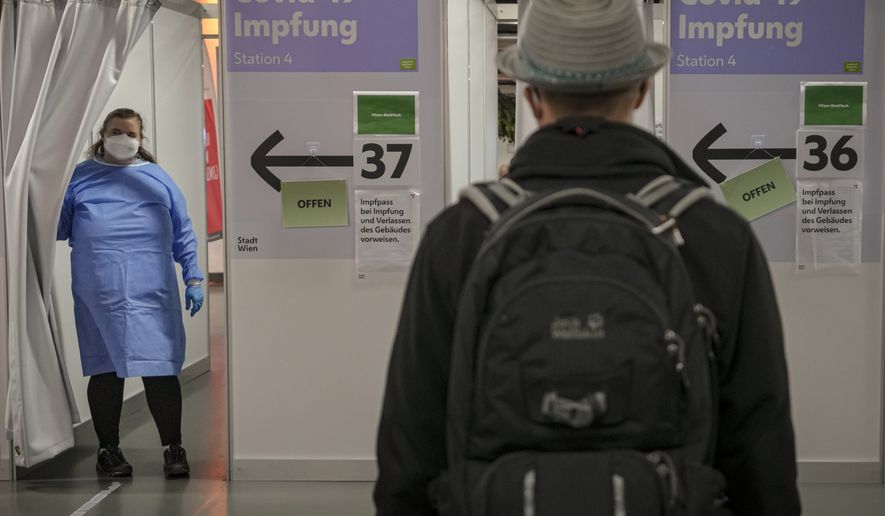GENEVA (AP) – The World Health Organization said that coronavirus cases jumped by 11% in Europe in the last week, the only region in the world where COVID-19 has continued to increase since mid-October.
In its weekly assessment of the pandemic released on Tuesday, the U.N. health agency said cases and deaths globally have risen by about 6%, with about 3.6 million new infections and 51,00 new deaths reported in the previous week.
WHO’s Europe director Dr. Hans Kluge warned that without urgent measures taken soon, the continent could see another 700,000 deaths by the spring.
“The European region remains in the firm grip of the COVID-19 pandemic,” Kluge said, calling for countries to increase vaccination and to take other control measures like masking and social distancing to avoid “the last resort of lockdowns.”
He noted that while more than 1 billion vaccine doses have been administered across WHO’s European region, which stretches to central Asia, the range in vaccination coverage varies from 10% to 80%.
In the last week, Austria, the Netherlands and Belgium have all adopted stricter measures including partial lockdowns to try to stem the latest surge of the coronavirus. Germany is also set to record more than 100,000 COVID-19 deaths this week, with some politicians now calling for a vaccine mandate, like the one ordered in Austria.
Globally, WHO reported that COVID-19 in Southeast Asia and the Middle East dropped by 11% and 9% respectively.
The biggest decrease in coronavirus deaths in the last week was seen in Africa, where fatalities fell by 30%, continuing a decreasing trend in COVID-19 that first began in late June.
Although cases remained stable in the Americas, WHO said the number of deaths rose by about 19%.
The agency said the easier-to-spread delta variant remains the predominant version of COVID-19 globally. Of the more than 840,000 sequences uploaded to the biggest publicly available database of viruses in the last week, about 99.8% were the delta variant.
Other variants including mu, lambda and gamma made up fewer than 1% - although they continue to make up a significant proportion of sequences from Latin America.




Please read our comment policy before commenting.